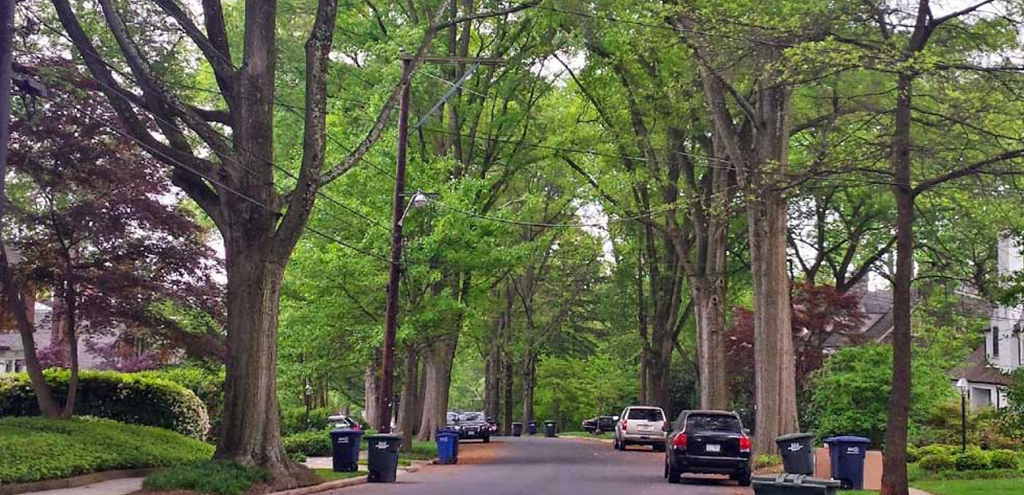THE LEAFLET

Pandemic Planting Progress
There’s been a lot of talking about ‘stocking up’ recently. From toilet paper and bleach in March, to hand sanitizer and disinfecting wipes in April and May, to kiddie pools throughout this summer. But in urban forestry, we’ve been monitoring and discussing a different, and more optimistic, kind of stocking.
Stocking level for DC’s street trees refers to the number of street trees that can be planted compared to the number that actually are planted. For example, if a city block has 20 planting spaces (10 on either side of the street), but only 16 trees are present, that means that the stocking level on that street is 80% (16 planted spaces / 20 spaces total). Higher stocking means more shade for people, sidewalks, homes, and businesses; slower traffic; greater stormwater capture; and more leaves to filter carbon and pollution from the air.
But wait – you might say not all streets are the same – and you would be right. Residential neighborhoods usually have more spaces and a continuous strip of grass available for planting, while commercially zoned areas have “tree boxes” aka a patch of soil surrounded by concrete. Additionally, the space between trees is also a factor. Large trees (think oaks, ginkgoes, lindens, etc.,) are spaced about 40 feet apart, whereas smaller ones (redbuds, cherries, yellowwood) are around 20 feet. There’s a lot to think about when planning a street’s planting plan!
Spacing differences between small and large trees can also have a big impact. Since 2000 DC’s Urban Forestry Division has been planting small and medium-sized trees under utility wires to reduce the number of tree/wire conflicts (think tree limbs touching power lines) and for spaces without overhead wires, larger trees are planted. What does this mean in practice? In 2009 the city had just over 141,000 tree spaces, but the most recent count last year shows 30,000 more trees – or 171,000 spaces. This is due to the city systematically planting every available tree space, while also planting two or more small/medium trees for every large one removed from under wires. That factor has pushed numbers up quite a bit.
Regarding stocking – over the two decades the numbers show the following. In 2000 there were 130,000 spaces and 100,000 trees, or 77% stocking. In 2009, 141,000 spaces and 127,000 trees, or 90%. Today there are 171,000 spaces and 164,000 trees – a 96% stocking rate. Ultimately in less than a decade, the city has not only increased the number of spaces but also stocking levels continue to climb.

Plantable vs Planted Space by Ward, courtesy of DDOT.
This type of slow, steady progress fits the lifecycle of the resource we’re managing – and is something we should all be proud about. But this begs another question: with practically all street tree spaces are filled, we still are only at 38% canopy – what do we do next to get to 40%?
That’s where you come in. Planting trees on private lots is the final frontier in achieving the city’s 40% canopy goal – and the goal cannot be achieved without you. If you don’t already know, you can get a free tree planted on your property – whether that’s a lot, near an apartment building’s entrance, group house’s common area, or townhome’s yard, the options are endless! We partner with DC to offer numerous free residential plantings. If you cannot plant where you live – be sure to ask your friend or neighbor who can or check in with your local school, park, or church. You’ll be doing your part in keeping DC green, healthy and a better place to live for all Washingtonians for decades to come! And – equally important – become a member to support our work making DC a sustainable city with an impressive canopy through planting, education, advocacy, maintenance, and community engagement.